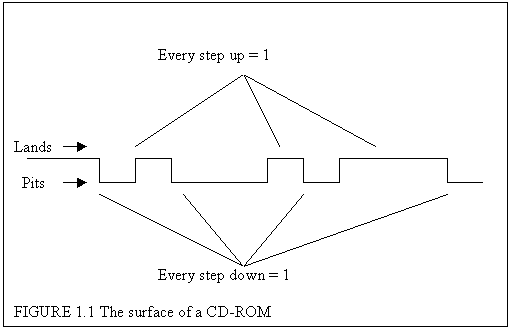
|
SIZE DOES MATTER. |
|---|
|
Light, rugged and small are the attributes that make the CD become one of the great marvels of twentieth-century engineering. It has a diameter of 120 mm, a height of 1.2 mm and a weight of between 14 and 33 grams and the hold n the middle is 15 mm. The size of data area may vary depending on how much programming has been recorded. If we include the lead-in and lead-out sections, the total recorded area considered to be 35.5 mm. The recorded portion of CD can be viewed in a linear fashion as a line 1.6 microns across that stretches for just over 70 New York City blocks (blocks run uptown-downtown). The width is not really 1.6 microns; actually it is half a micron. The recorded portion is only half the micron wide. The size of half micron is considered as these comparisons; the prick of a pin is 700 times larger, five hundred atoms of hydrogen, end to end and the average fingernails grows half a micron in about seven minutes. Now imagine that the street that full of potholes. Each pothole is called a pit and is only 0.1 microns deep. They vary length from 1 to 3 microns (refer to Table 1.0). Its proportions (or respect ratio) are similar to a grain of rice, but it is much smaller. If one compact disc were the size of a single grain of rice, the proportional size of the total CD would be over 400 yards in the diameter(instead of 120 mm). That is the length of four football fields laid end to end. The proportionate length of the spiral (10,602 miles) would be longer than the diameter of the earth (7920 miles).
TABLE 1.0 The following pit-structure dimensions are required to achieve the necessary signal during play. Minimum pit length 0.833 micron (1.2 m/s) to 0.927 micron (1.4 m/s) Maximum pit length 3.05 micron (1.2 m/s) to 3.56 (1.4 m/s) Pit depth Approximately 0.11 micron Pit with Approximately 0.5 micron
The CD-ROM disc uses the constant linear velocity (CLV) format. The spacing of signal elements along the spiral path is constant; the rate of rotation of the disc is varied to math the path radius, so that data is read at a constant rate. The spiral path is divided into sectors of equal length and hence equal data capacity. Sectors are identified solely by their sector number. The sector number is in fact compound, made up of ‘minutes’, ‘seconds’ and sectors; this scheme has been carried over unchanged from Compact Audio technology.
The higher level of the surface that the pits are set into is called a land. So our spiral of tracks is really just an alternating pattern of pits and lands (see Figure 1.1). The storage of data in these pits and lands is achieved by assigning very step(be it up or down)
|
|
I |

Copyright(c) 2002 WWA CD-ROM, Inc. All rights reserved.
angin_bayu_ash@yahoo.co.uk






